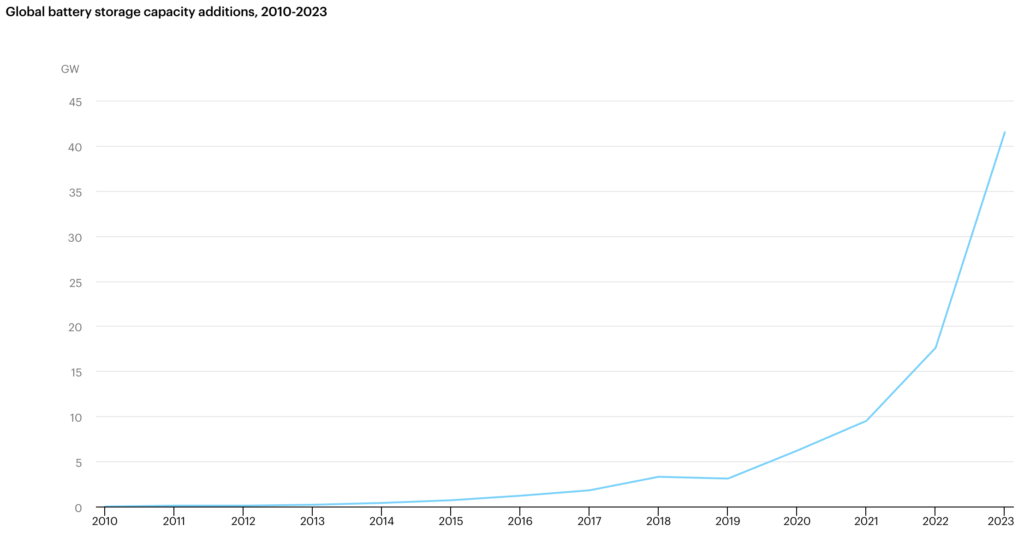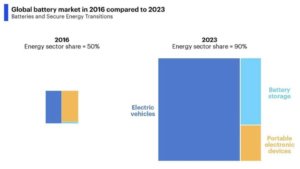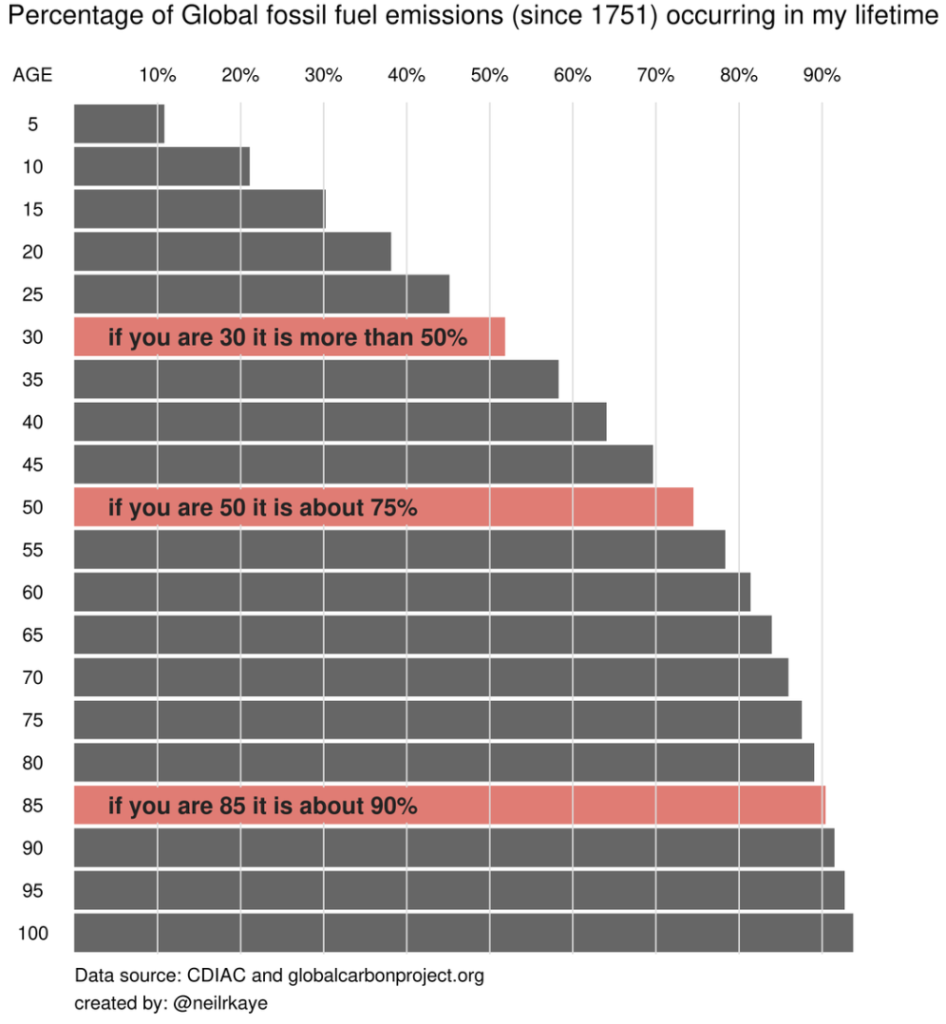Environment: Albanese sacrifices the marine environment for Tasmanian votes
March 9, 2025
Prime minister showers salmon farmers with treats despite the environmental destruction and massive salmon deaths. Nations have opportunities during 2025 to improve ocean health. Exponential increases in global battery storage capacity. People alive today have produced most of the world’s greenhouse gases.
Albanese helps salmon farmers destroy Tasmanian harbours
The serious environmental problems caused by salmon farming in Tasmania’s coastal waters are well documented – pollution of the harbours with food, excreta and chemicals, deoxygenation of the water, accidental and not-so-accidental killing of seals, pushing the “Endangered” Maugean skate to the brink of extinction, unsustainable hoovering up of krill to feed the salmon, and more. Then there’s the animal welfare issues caused by cramming millions of fish into pens just like feedlot cattle and battery-farmed hens. And in the last two weeks we’ve witnessed the death of hundreds of thousands of farmed salmon and the dumping of their rotting carcasses into pits (this short video may be a little confronting).
So, what is our Prime Minister’s response to this? He’s promised $37 million to support the industry and legislation to exempt “sustainable” salmon farming from federal environmental legislation. Why does an industry that has paid no tax on the $4 billion worth of fish it has sold in the last four years need an extra $37 million handout from the government? And if the PM knows that salmon farming is currently an environmental disaster, what makes him think that the three companies involved are capable of cleaning it up? And just supposing they can, why then does he think it needs to be exempt from environmental legislation? If he doesn’t know Tasmanian salmon farming is an environmental disaster, he’s been poorly briefed.
Why Albo? And why now? Rhetorical questions, of course – salmon and skate don’t vote.

The salmon farming practices of all three Tasmanian producers are regarded as unsustainable by GoodFish, Australia’s independent sustainable seafood guide. The guide’s advice is to avoid them altogether.
You might not be able to influence our PM overnight, but you can decide today not to buy or eat any more Tasmanian farmed salmon. GoodChoice.
2025 is a critical year for the oceans
The oceans and their ecosystems face numerous threats: warming water, chemical and plastic pollution, oil spills, overfishing, loss of biodiversity, deep sea mining, fish farming!, to name a few. Yet in the panoply of environmental concerns, oceans receive relatively little attention – despite covering more than 70% of the Earth’s surface, holding 97% of Earth’s water and containing more life than anywhere else on Earth.
You might not be aware of it from mainstream media coverage, but there will be several events and opportunities for the welfare of the world’s oceans to receive more attention during 2025:
- Two reasonably longstanding international agreements already impose responsibilities on nations to protect nature within their national boundaries. In 2023, after a two-decade gestation, a treaty was signed by 60 nations to conserve and sustainably use marine resources in the 61% of the ocean that lies outside national jurisdictions. Technically called the UN Agreement on Biodiversity Beyond National Jurisdictions, it is more commonly referred to as the High Seas Treaty. It is hoped that the Treaty will be ratified and become operational at the UN Ocean Conference in Nice in June.
- In 2022, the World Trade Organisation adopted the Agreement on Fisheries Subsidies which began by tackling payments that contribute to illegal, unreported and unregulated fishing, overfished stocks and fishing on the high seas. However, another 22 countries are required to ratify the Agreement before it comes into effect. It is hoped that subsidies that encourage vessel construction and fuel use, thereby increasing fishing capacity, will be tackled next.
- Between 8 and 10 million metric tons of plastic end up in the ocean each year. Plastic waste accounts for 80% of all marine pollution. Attempts to finalise a Global Plastics Treaty failed during 2024 when countries couldn’t agree on the scope of the Treaty. Should it cover the entire life cycle of plastics or just waste management and recycling? Will the commitments be voluntary or binding? 2025 will see more attempts to reach agreement, with a High Ambition Coalition of 100 countries that favour binding commitments and a reduction in primary plastic production battling the vested interests of oil producing nations.
- The ocean floor contains large quantities of valuable elements which many companies and nations are keen to access and exploit. But the environmental and planetary consequences of deep-sea mining are a major worry. The International Seabed Authority will meet in Jamaica in June to try to find a consensus. Don’t do it, I say.
- Presidents da Silva of Brazil (the location of this year’s climate COP) and Macron of France (the site of June’s UN Ocean Conference) have launched the “Road from Nice to Belém” to link the two conferences and encourage integration of actions to tackle ocean conservation and climate change.
One can only hope that the negotiations for the various treaties and agreements result in real action and not just more empty compromises for the sake of appearances.
What species of animal …
- is about 5cm long?
- glows in the dark?
- has a combined weight equal to that of 8 billion humans?
- is threatened by a warming climate?
- sequesters millions of tonnes of carbon every year?
Learn more about our environmental superhero in this 3-minute video.
Battery storage charging ahead
A few weeks ago I discussed the S-shaped curve that describes the uptake over time of solar power in particular and successful innovations in general. Take a look at the graph below of the additional (not cumulative) global battery storage capacity installed annually from 2010 to 2023.

In 2016 just 1GW was added. In 2022 it was 18GW and in 2023 it more than doubled to 42GW. The rate of uptake is increasing exponentially (and for once the word is being used correctly). We are yet to get to the plateau at the top of the S-curve and need to not get there for quite a while. New capacity needs to keep increasing by 25% each year to 2030 for the world to be on track to meet its emissions reduction and net zero ambitions.
The global market for batteries has been dominated by EVs since 2016 and they now account for 80% of market share. The demand for batteries for EVs increased by 40% between 2022 and 2023 – that was almost 45 million new EVs on the road. It is predicted that by 2030 the EVs on the road will reduce oil consumption by 8 million barrels per day.

Despite the development of new types of batteries that threaten their dominance, lithium-ion batteries continue to rule the roost, helped by their own technological improvements, particularly higher energy densities that allow the production of lighter batteries with longer lives and lower flammability, economies of scale and a 90% fall in price since 2010. EVs are going to keep getting cheaper.
The International Energy Agency identifies significant risks that could slow the growth of renewable energy and result in ongoing environmental damage:
- Failure to scale up the supply of minerals that are critical for battery production.
- Failure to scale up the production of battery storage which would slow the transition to clean energy …
- … and lead to the prolonged use of coal and gas resulting in more greenhouse gases, more air pollution and higher fuel bills (not forgetting more preventable heart and lung disease and more totally unnecessary premature deaths).
According to the IEA, the solutions to these problems lie with policymakers and regulators helping the development of secure and sustainable battery supply chains from raw materials to recycling and disposal, the construction of electricity distribution networks and EV charging systems, and the implementation of pricing systems that are fair to all participants.
Fossil fuel emissions during our lifetimes
We tend to see the start of the fossil fuel era as 1750 and use that as the (pre-industrial) baseline for measuring GHG emissions and levels in the atmosphere. In fact, emissions of CO2 from the burning of coal only really took off around 1850, with oil and gas emissions picking up 50-100 years later.
To all intents and purposes, however, the real problem has been caused by you and me. Between 70% and 90% of all fossil fuel-related CO2 emissions since 1751 have occurred during the lifetimes of most P&I readers.
Unlike our Victorian ancestors, we cannot claim ignorance as an excuse. We (that is, “the world”) have known about greenhouse gases and global warming for decades and we have chosen to oblige future generations to suffer the consequences and try to manage it. The irony of naming ourselves Homo sapiens (“wise” humans) would be amusing if it wasn’t fatal hubris.

The views expressed are solely those of the author and may or may not reflect those of Pearls and Irritations.

